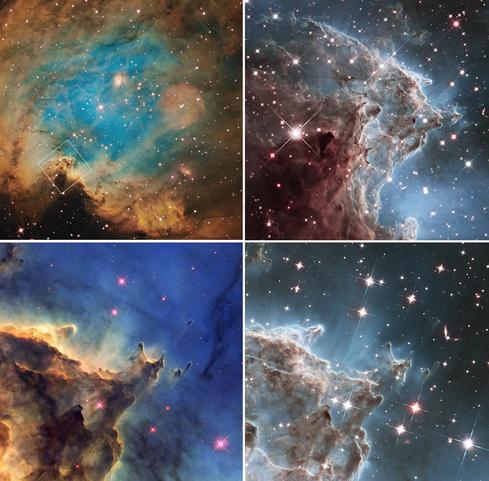An oxygen recycling system, optical communications, and a deep space atomic clock top the space agency's list of priorities.


Hubble Turns 24: 5 Biggest Discoveries
Hubble Turns 24: 5 Biggest Discoveries (Click image for larger view and slideshow.)
NASA is envisioning life-support systems that could recycle breathable oxygen on human spaceflight missions. The agency issued a solicitation this week that calls for the design, development, fabrication, and testing of an advanced oxygen recovery technology.
Such systems are just one of many deep space exploration technologies that NASA's Space Technology Mission Directorate is investing in. The directorate is responsible for developing, testing, and flying hardware for future missions. "Deep space exploration is imminent. Over the next 19 months we see investments in eight areas that are critical," Michael Gazarik, NASA's associate administrator for space technology, said Wednesday during a media teleconference.
In addition to advanced oxygen recovery, here are the seven other focus areas:
High-power, high-efficiency solar electric propulsion systems are in the works for missions such as redirecting an asteroid. "There is a need for large solar arrays to collect more solar power," said Gazarik.
[3D printing in space? Read NASA Explores 3D Printing: 5 Cool Projects.]
Deep-space optical communications would provide up to 100 times increased data returns over present radio-frequency space communications.
Advanced entry descent and landing capabilities are needed for future Mars missions. NASA is developing a low-density supersonic decelerator (LDSD) capable of slowing down rovers that are larger and heavier than Curiosity, as they land on Mars. The delivery system will be tested this June in Hawaii.
A new class of autonomous systems and robotics would enable vehicles that can cover much greater distances on Mars than the current generation of rovers.
NASA is turning to lighter materials and structures, which, for example, would allow rocket stages to be replaced with composites.
For navigation, the deep space atomic clock will be smaller, lighter, and much more stable than any other atomic clock flown in space.
In-space high-contrast coronagraphs will advance direct imaging of exoplanets.
One technology Gazarik did not mention that is part of the Space Technology Mission Directorate is a smartphone-controlled satellite. The agency is planning to send PhoneSat 2.5 on the next commercial resupply mission to the International Space Station. The PhoneSat, scheduled to launch April 18 aboard SpaceX's Falcon 9 rocket, will demonstrate how smartphone components can support space-based communications systems. It will also test the satellite's survivability in the radiation of low-Earth orbit, as high as 220 miles above our planet.
NASA says the technology demonstration mission will pave the way for a "constellation of cooperative small satellites" slated to launch later this year.
Last April, NASA launched into space three other PhoneSats, powered by HTC Nexus One and Samsung Nexus S. During that flight, PhoneSat 1.0 satellites, dubbed Graham and Bell, and an early prototype of PhoneSat 2.0, called Alexander, successfully broadcast signals from space. The miniature satellites, measuring four inches on each side and weighing less than four pounds, were an attractive option for NASA because they're much cheaper and easier to build. The launch of PhoneSat 2.4 followed in November, and that satellite is still in orbit.
Join us at GTEC, Canada's government technology event. More than 6,000 participants attend GTEC – Government Technology Exhibition And Conference each year to exchange ideas and advance the business of information and communications technology (ICT) in government. Don't miss thought-provoking keynotes, workshops, panels, seminars, and roundtable discussions on a comprehensive selection of ICT topics presented by leading public sector and industry experts. Register for GTEC with marketing code MPIWKGTEC and save $100 on entire event and conference passes or for a free expo pass. It happens Oct. 27 to 30 in Ottawa.
About the Author(s)
You May Also Like







